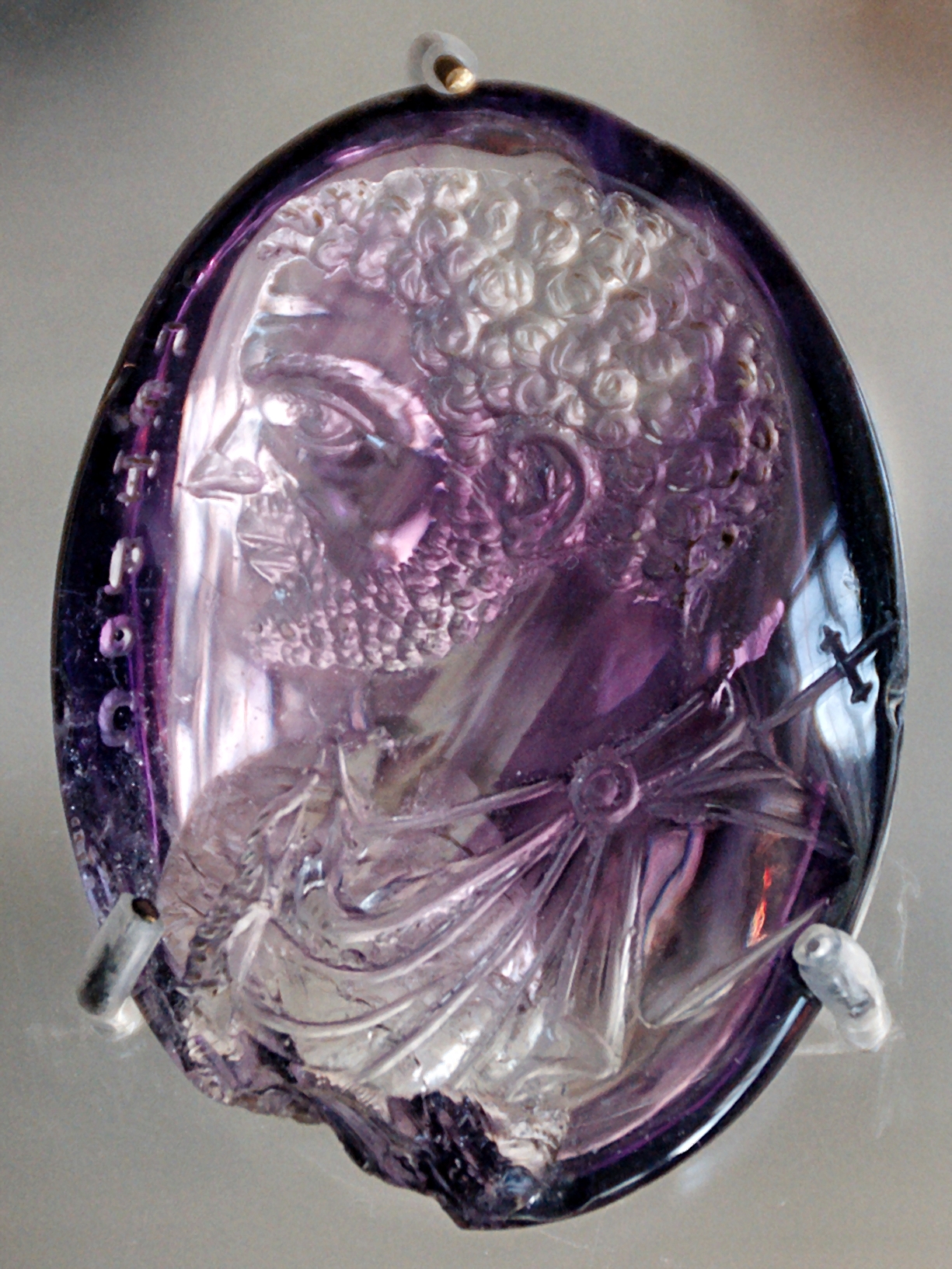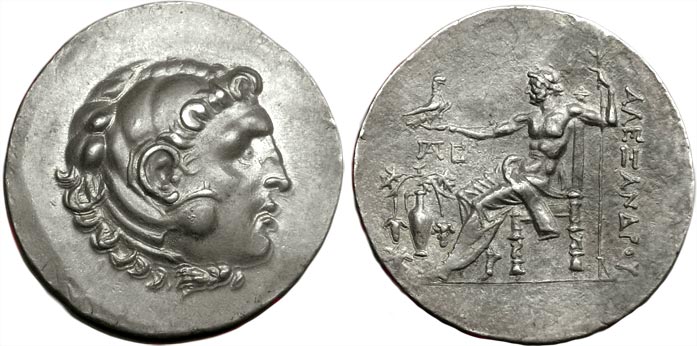|
Pyrgoteles
Pyrgoteles () was one of the most celebrated Engraved gem, gem-engravers of ancient Greece, living in the latter half of the 4th century BC. The esteem in which he was held may be inferred from an edict of Alexander the Great, which placed him on a level with Apelles and Lysippos, by naming him as the only artist who was permitted to engrave Seal (emblem)#Signet rings, signet rings for the king. (Plin. H. N. vii. 37. s. 38, xxxvii. 1. s. 4.) Works Pyrgoteles was one of the three court artists authorized to depict Alexander the Great's figure in art (the others being Apelles for painting and Lysippos for sculpture). Pliny the Elder (''Natural History'' 37.8) adds that Alexander had issued an edict forbidding anyone to engrave his image on emeralds, and other gems, outside of Pyrgoteles. Unfortunately, every thing else respecting Pyrgoteles is left to the unknown, due to the neglect of ancient writers and modern forgers, lack of remains, and so many copies coming out of that same ... [...More Info...] [...Related Items...] OR: [Wikipedia] [Google] [Baidu] |
Alexander The Great
Alexander III of Macedon (; 20/21 July 356 BC – 10/11 June 323 BC), most commonly known as Alexander the Great, was a king of the Ancient Greece, ancient Greek kingdom of Macedonia (ancient kingdom), Macedon. He succeeded his father Philip II of Macedon, Philip II to the throne in 336 BC at the age of 20 and spent most of his ruling years conducting Wars of Alexander the Great, a lengthy military campaign throughout West Asia, Western Asia, Central Asia, parts of South Asia, and ancient Egypt, Egypt. By the age of 30, he had created one of the List of largest empires, largest empires in history, stretching from History of Greece, Greece to northwestern History of India, India. He was undefeated in battle and is widely considered to be one of history's greatest and most successful military commanders. Until the age of 16, Alexander was tutored by Aristotle. In 335 BC, shortly after his assumption of kingship over Macedon, he Alexander's Balkan campaign, campaigned in the Bal ... [...More Info...] [...Related Items...] OR: [Wikipedia] [Google] [Baidu] |
Engraved Gem
An engraved gem, frequently referred to as an intaglio, is a small and usually semi-precious gemstone that has been carved, in the Western tradition normally with images or inscriptions only on one face. The engraving of gemstones was a major luxury art form in the Ancient history, ancient world, and an important one in some later periods. Strictly speaking, ''engraving'' means carving ''in intaglio'' (with the design cut ''into'' the flat background of the stone), but relief carvings (with the design projecting ''out of'' the background as in nearly all cameo (carving), cameos) are also covered by the term. This article uses ''cameo'' in its strict sense, to denote a carving exploiting layers of differently coloured stone. The activity is also called ''gem carving'' and the artists ''gem-cutters''. References to antique gems and intaglios in a jewellery context will almost always mean carved gems; when referring to monumental sculpture, the term counter-relief, meaning the same a ... [...More Info...] [...Related Items...] OR: [Wikipedia] [Google] [Baidu] |
Lysimachus Coin, Alexander Depiction, 297-282 B
Lysimachus (; Greek: Λυσίμαχος, ''Lysimachos''; c. 360 BC – 281 BC) was a Thessalian officer and successor of Alexander the Great, who in 306 BC, became king of Thrace, Asia Minor and Macedon. Early life and career Lysimachus was born circa 360 BC, to a family of Thessalian stock but they were citizens of Pella in Macedonia. He was the second son of Agathocles and his wife; there is some indication in the historical sources that this wife was perhaps named Arsinoe, and that Lysimachus' paternal grandfather may have been called Alcimachus. His father was a nobleman of high rank who was an intimate friend of Philip II of Macedon, who shared in Philip II’s councils and became a favourite in the Argead court.Lund, ''Lysimachus: A Study in Early Hellenistic Kingship'', p.2 Lysimachus and his brothers grew up with the status of Macedonians; all these brothers enjoyed with Lysimachus prominent positions in Alexander’s circle and, like him, were educated at the Macedoni ... [...More Info...] [...Related Items...] OR: [Wikipedia] [Google] [Baidu] |
Artists Of Alexander The Great
An artist is a person engaged in an activity related to creating art, practicing the arts, or demonstrating the work of art. The most common usage (in both everyday speech and academic discourse) refers to a practitioner in the visual arts only. However, the term is also often used in the entertainment business to refer to actors, musicians, singers, dancers and other performers, in which they are known as ''Artiste'' instead. ''Artiste'' (French) is a variant used in English in this context, but this use has become rare. The use of the term "artist" to describe writers is valid, but less common, and mostly restricted to contexts such as critics' reviews; "author" is generally used instead. Dictionary definitions The ''Oxford English Dictionary'' defines the older, broader meanings of the word "artist": * A learned person or Master of Arts * One who pursues a practical science, traditionally medicine, astrology, alchemy, chemistry * A follower of a pursuit in which skill co ... [...More Info...] [...Related Items...] OR: [Wikipedia] [Google] [Baidu] |
Ancient Greek Artists
Ancient history is a time period from the beginning of writing and recorded human history through late antiquity. The span of recorded history is roughly 5,000 years, beginning with the development of Sumerian cuneiform script. Ancient history covers all continents inhabited by humans in the period 3000 BCAD 500, ending with the expansion of Islam in late antiquity. The three-age system periodises ancient history into the Stone Age, the Bronze Age, and the Iron Age, with recorded history generally considered to begin with the Bronze Age. The start and end of the three ages vary between world regions. In many regions the Bronze Age is generally considered to begin a few centuries prior to 3000 BC, while the end of the Iron Age varies from the early first millennium BC in some regions to the late first millennium AD in others. During the time period of ancient history, the world population was exponentially increasing due to the Neolithic Revolution, which was in full progr ... [...More Info...] [...Related Items...] OR: [Wikipedia] [Google] [Baidu] |
Etruria
Etruria ( ) was a region of Central Italy delimited by the rivers Arno and Tiber, an area that covered what is now most of Tuscany, northern Lazio, and north-western Umbria. It was inhabited by the Etruscans, an ancient civilization that flourished in the area from around the 8th century BC until they were assimilated into the Roman Republic in the 4th century BC. Etruscan Etruria The ancient people of Etruria are identified as Etruscans. Their complex culture centered on numerous city-states that arose during the Villanovan period in the ninth century BC, and they were very powerful during the Orientalizing Archaic periods. The Etruscans were a dominant culture in Italy by 650 BC,Rix, Helmut. "Etruscan." In ''The Ancient Languages of Europe,'' ed. Roger D. Woodard. Cambridge University Press, 2008, pp. 141–164. surpassing other ancient Italic peoples such as the Ligures. Their influence may be seen beyond Etruria's confines in the Po River Valley and Latium, as wel ... [...More Info...] [...Related Items...] OR: [Wikipedia] [Google] [Baidu] |
Etruscan Civilization
The Etruscan civilization ( ) was an ancient civilization created by the Etruscans, a people who inhabited Etruria in List of ancient peoples of Italy, ancient Italy, with a common language and culture, and formed a federation of city-states. After adjacent lands had been conquered its territory covered, at its greatest extent, roughly what is now Tuscany, western Umbria and northern Lazio, as well as what are now the Po Valley, Emilia-Romagna, south-eastern Lombardy, southern Veneto and western Campania. A large body of literature has flourished on the origins of the Etruscans, but the consensus among modern scholars is that the Etruscans were an indigenous population. The earliest evidence of a culture that is identifiably Etruscan dates from about 900 BC. This is the period of the Iron Age Villanovan culture, considered to be the earliest phase of Etruscan civilization, which itself developed from the previous late Bronze Age Proto-Villanovan culture in the same region, p ... [...More Info...] [...Related Items...] OR: [Wikipedia] [Google] [Baidu] |
Lysimachus
Lysimachus (; Greek language, Greek: Λυσίμαχος, ''Lysimachos''; c. 360 BC – 281 BC) was a Thessaly, Thessalian officer and Diadochi, successor of Alexander the Great, who in 306 BC, became king of Thrace, Anatolia, Asia Minor and Macedonia (Greece), Macedon. Early life and career Lysimachus was born circa 360 BC, to a family of Thessaly, Thessalian stock but they were citizens of Pella in Macedonia (ancient kingdom), Macedonia. He was the second son of Agathocles of Pella, Agathocles and his wife; there is some indication in the historical sources that this wife was perhaps named Arsinoe, and that Lysimachus' paternal grandfather may have been called Alcimachus. His father was a nobleman of high rank who was an intimate friend of Philip II of Macedon, who shared in Philip II’s councils and became a favourite in the Argead dynasty, Argead court.Lund, ''Lysimachus: A Study in Early Hellenistic Kingship'', p.2 Lysimachus and his brothers grew up with the status of Mac ... [...More Info...] [...Related Items...] OR: [Wikipedia] [Google] [Baidu] |
Tetradrachm
The tetradrachm () was a large silver coin that originated in Ancient Greece. It was nominally equivalent to four drachmae. Over time the tetradrachm effectively became the standard coin of the Antiquity, spreading well beyond the borders of the Greek World. As a result, tetradrachms were minted in vast quantities by various polities in many weight and fineness standards, though the Athens-derived ''Attic standard'' of about 17.2 grams was the most common. Because of their large size, tetradrachms were often used by various states or rulers to advertise themselves or to deliver political messages. Popularity of the tetradrachm outlived the political independence of the Greeks and it remained in wide circulation in the Mediterranean up until Crisis of the Third Century, while debased varieties persisted in India and Central Asia into early Middle Ages. Due to their often high artistic level tetradrachms are eagerly collected in modern times, and well-preserved or rare specimen ... [...More Info...] [...Related Items...] OR: [Wikipedia] [Google] [Baidu] |
Coin Die
Mint (coin), Minting, coining or coinage is the process of manufacturing coins using a kind of stamping (metalworking), stamping, the process used in both hammered coinage and milled coinage. This "stamping" process is different from the method used in cast coinage. A coin die (archaically spelt dye) is one of the two metallic Die (manufacturing), pieces that are used to strike a coin, one per each side of the coin. A die contains an inverse version of the image to be ''struck'' on the coin. ''Striking'' a coin refers to pressing an image into the blank metal disc, or planchet, and is a term descended from the days when the dies were struck with hammers to deform the metal into the image of the dies. Modern dies made out of hardened steel are capable of producing many hundreds of thousands of coins before they are retired and defaced. Scissel is the scrap produced in the punching of coin blanks from a continuous strip of metal. Ancient coin dies Prior to the modern era, coin ... [...More Info...] [...Related Items...] OR: [Wikipedia] [Google] [Baidu] |








